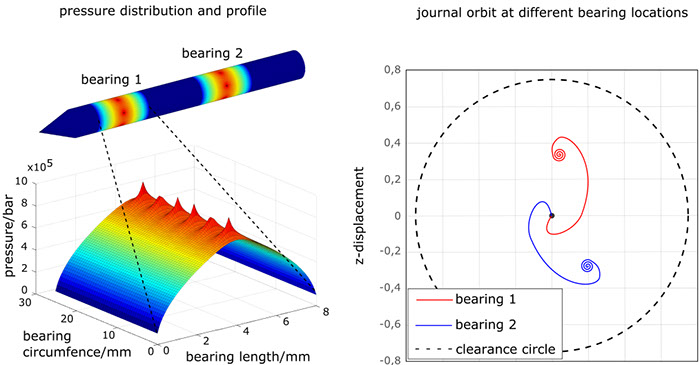

RESEARCH PROGRAM
Title: Development of a coupled simulation model to solve the equations of motion of an air bearing spindle’s rotor
Name: Dipl.-Ing. Andreas Lange
E-Mail: andreas.lange@mv.uni-kl.de
Phone: 0631 – 205 - 3725
Project description:
Starting situation
The use of air bearing spindles offers multiple advantages compared to conventional ball bearing spindles, for instance higher achievable rotational speeds and lower radial deviation.
However, for these benefits to come into effect, the spindle has to be designed with respect to the underlying physical phenomena of air bearings. Accuracy and obtainable rotational speed are strongly dependent on the bearing characteristics and the underlying multiphysical effects. Therefore, a deep understanding of various physical effects and multiphysical interactions is required to optimize dynamic characteristics during the design of high-precision air bearing spindles.
Regardless of the optimization during the spindle design, manufactured spindles still require balancing to compensate for remaining error motion after the manufacturing process. Balancing is usually achieved mechanically by adding or removing small fractions to/of the spindle rotor. With the development of a machine control for air bearings, mechanical balancing may be expendable.
Approach
1st Step: Implementation of structural, thermal and fluid simulation models
2nd Step: Coupling of all simulation models to include multiphysical interactions and to
completely describe the dynamic behaviour of air bearing spindles
3rd Step: Design of an air bearing test spindle using the developed multiphysical model
4th Step: Experimental investigations of the test spindle to validate simulation results
5th Step: Development of an intelligent machine control for the compensation of the remaining spindle’s error motion
Expected Results
It is expected to develop a deeper understanding of the multiphysical interactions by modeling the dynamic behaviour of air bearing spindles influenced by structural, thermal and fluid effects. By using the simulation model, it is expected to build an air bearing spindle providing high rotational speeds and accuracy. Further, the model-based approach shall allow for the effective development of an intelligent machine control for the compensation of the remaining spindle’s error motion.

Figure 1: pressure distribution and profile of the journal bearings (left);
journal orbit at different bearing locations (right)

